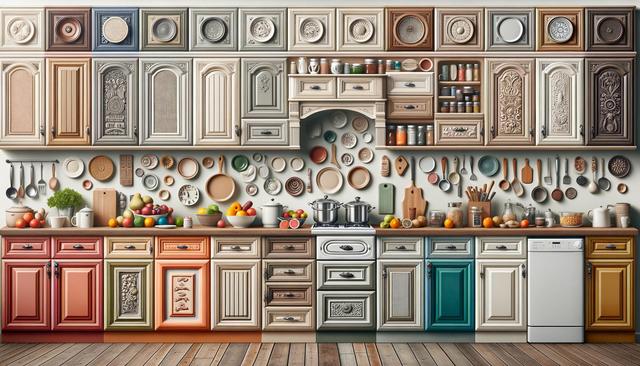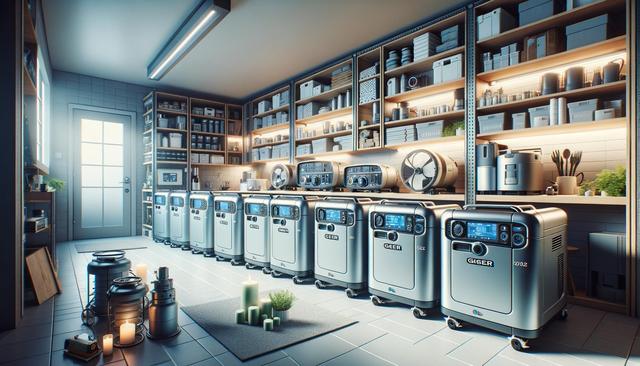The Impact of Colour Trends on Kitchen Design
Trends in kitchen design shift over time, and the colours we once considered stylish can quickly become outdated. The kitchen, often viewed as the heart of the home, reflects broader design movements. As such, the colour of kitchen cabinets plays a major role in setting the tone for the entire space. In recent years, neutral tones, earthy hues, and minimalist palettes have gained popularity, pushing some former favourites into the background.
Certain colours that were once popular—like overly bright or high-gloss finishes—are now less commonly seen in contemporary kitchen designs. These outdated colours can make your kitchen feel stuck in a different era and may even impact the resale appeal of your home. Staying informed about which cabinet colours are falling out of favour can help homeowners make more timeless design decisions and maintain a fresh, modern look.
High-Gloss Reds and Oranges: Once Bold, Now Overbearing
There was a time when high-gloss red or orange cabinets were seen as bold and energetic choices. While they certainly made a statement, these colours have now become less desirable due to their overwhelming nature and limited versatility. Today’s kitchen trends lean toward more calming and understated palettes, making these flashy colours appear dated.
The challenges with high-gloss red and orange cabinets include:
- Difficulty coordinating with other finishes and appliances
- A tendency to make the space feel smaller or more chaotic
- Susceptibility to quick trend cycles, leading to faster design fatigue
Homeowners looking to update such kitchen designs often opt to repaint cabinets in more neutral or subdued tones, which can instantly modernize the space. Soft whites, greys, and muted greens are now more aligned with current preferences, offering both flexibility and longevity.
Honey Oak and Yellow Wood Tones: A Thing of the Past
Honey oak cabinets were a staple in homes built throughout the 1980s and 1990s. These warm, yellow-toned woods were once valued for their perceived warmth and durability. However, their strong undertones and dated appearance have made them less appealing in today’s interiors. Many homeowners find these cabinets difficult to pair with modern countertops, backsplashes, and flooring options.
Replacing or refinishing honey oak cabinets is a common renovation project. Popular updates include:
- Painting them in cooler tones like light grey or navy
- Refinishing with a more modern wood stain such as walnut or espresso
- Pairing with matte black or brushed nickel hardware for contrast
In many cases, simply changing the finish can breathe new life into these cabinets and bring a kitchen closer to current design standards.
Dark Espresso and Black Cabinets: Losing Their Appeal
While dark espresso and black cabinets once conveyed sophistication and luxury, they are now less favoured due to their heavy and sometimes oppressive appearance. In smaller kitchens, these dark tones can make the space feel even more confined. They also tend to show fingerprints, dust, and scratches more easily, increasing maintenance efforts.
As natural light, openness, and airy design have become more valued, darker colours have taken a back seat. Homeowners are increasingly choosing lighter cabinet colours to:
- Maximize the feeling of space
- Enhance brightness and reflect natural light
- Create a cleaner and more inviting environment
For those with existing dark cabinetry, consider lightening the space with white countertops, reflective backsplashes, or open shelving to reduce visual weight.
Overly Themed Colours: Outdated by Specific Eras
Cabinet colours tied strongly to specific themes or decades can quickly show their age. For instance, pastel blues and mint greens, popular in mid-century kitchens, may look charming in retro-themed homes but often feel out of place in contemporary settings. Similarly, Tuscan-inspired golds and burgundies, once fashionable in the early 2000s, have largely fallen out of favour.
Such themed colours can limit flexibility when updating other elements of the kitchen. To modernize, consider repainting cabinets in more adaptable shades and using themed accents as removable decorative elements instead of permanent fixtures. This allows for easier updates as preferences evolve.
Modern design encourages personalization, but within a framework that allows versatility. Neutral and classic tones are more likely to stand the test of time while still allowing for seasonal or stylistic changes through accessories and décor.
Conclusion: Making Timeless Choices for Your Kitchen
Understanding which kitchen cabinet colours are now considered outdated can help you make more informed design decisions. While personal taste should always play a role, aligning your choices with current trends can enhance your kitchen’s appeal and functionality. Moving away from bright glosses, yellow woods, and overly dark tones opens the door to more versatile, calming, and timeless options. Whether you’re planning a renovation or building new, selecting the right cabinet colour is a step toward creating a kitchen that feels both modern and enduring.


